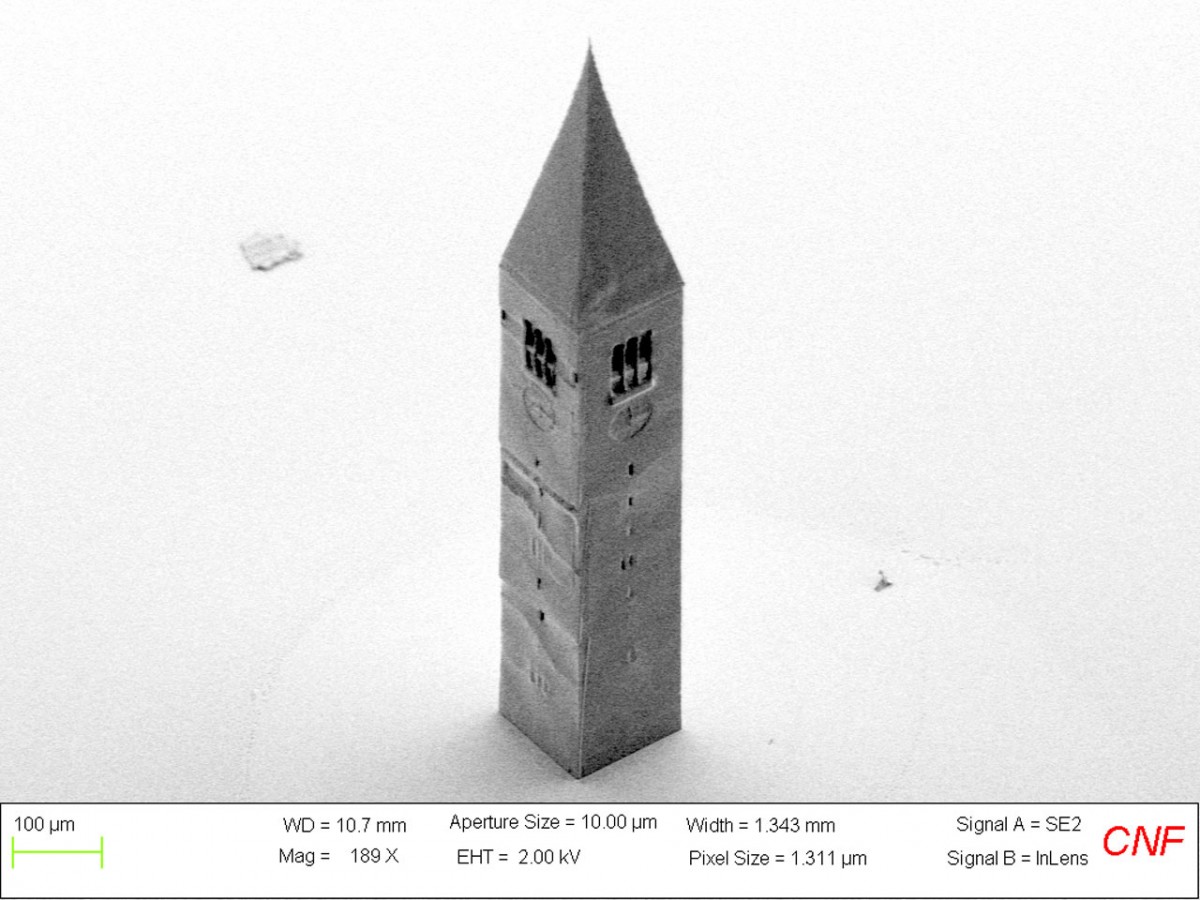How small, you ask? It is tiny indeed: Constructed to scale, it is 160 microns wide, 150 microns deep and 1 millimeter tall. A micron is one-millionth of a meter; a millimeter is one-thousandth of a meter. There are just over 25 millimeters to an inch.
Another way to picture it: A penny is approximately 1.5 millimeters thick, so the nano-McGraw would be dwarfed next to the coin.
“This is possibly the world’s smallest bell tower,” said Camacho, whose achievement of epic proportions was accomplished using one of CNF’s newest tools: the NanoScribe GT2 Laser Lithography System, a two-photon polymerization volumetric 3D printer.
Models for printing can be designed using the stand-alone software DeScribe – which comes with the tool – or with any CAD software capable of outputting file formats DXF or STL. And you don’t need to be a photolithography specialist to use the technology.
“Fifteen years ago, only a specialist could do this with very specialized equipment,” said Chris Ober, director of CNF and professor of materials engineering in the College of Arts and Sciences. “Today, with this tool, researchers in the life sciences can make cell scaffolds or microfluidic devices; researchers in photonics can draw 3D waveguides; researchers in robotics can make very small, soft structures for soft robotics – all at this tiny length scale.”
Upon delivery of the NanoScribe GT2, the CNF chose perhaps the most iconic Cornell symbol to demonstrate its advanced capabilities. Camacho said that during the early portion of the pandemic lockdown, he spent a lot of time researching the history behind McGraw Tower.
“I did not find a detailed 3D CAD model of the structure, so I created my own,” he said. “Pictures from the Cornell [library] online archive and the building’s website were used as a reference. My main specifications and assumptions: 173 feet (53 meters) tall, 161 steps, 21 bells, identical sides, two different staircases, two floors at the top, a pyramidoid roof and a Romanesque Revival architecture style.”
The level of detail Camacho was able to achieve is striking: It includes a complete reconstruction of the tower, from the individual external bricks to the dual internal stairways and bells.
Camacho is pushing the envelope of the NanoScribe GT2, working on an even smaller, higher-resolution print with more of McGraw Tower’s fine detail. The goal: to print a 200-micron-tall clock tower – one-fifth the size of the current nano-tower.
Founded in 1977, CNF is a member of the National Nanotechnology Coordinated Infrastructure (NNCI), a network of user facilities funded by the National Science Foundation. CNF enables scientists and engineers from academia and industry to conduct micro- and nanoscale research with state-of-the-art technology and expertise from its 23-member technical staff.
For additional information, see this Cornell Chronicle story.
-30-


